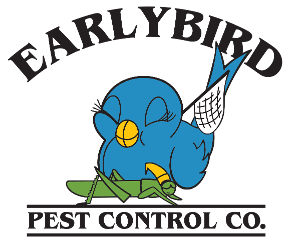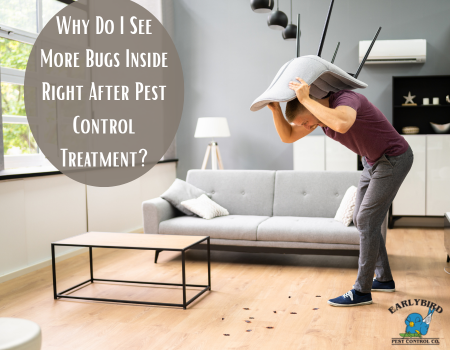If you’ve just had your home professionally treated for pests, it might feel alarming to suddenly see more bugs than before. After all, isn’t pest control supposed to get rid of them? Surprisingly, spotting increased bug activity right after a pest control treatment is not only common — it’s actually a sign that the process is working. Let’s break down why this happens and what you should expect in the days following a pest control service.
Why Do Bugs Appear After Pest Control?
When pest control professionals apply treatments around your home, whether it’s a spray, bait, or dust, the chemicals disturb the pests’ hiding spots and disrupt their environment. Bugs that were comfortably hiding inside walls, under appliances, or in dark corners are forced out of their safe spaces as they come into contact with the treatment.
Rather than being an indication of treatment failure, this increased activity typically means the pests are being flushed out of their hiding spots and are now exposed to the insecticides. They might appear dazed, disoriented, or sluggish — and while it might be unsettling to see, it’s a temporary part of the elimination process.
How Long Does This Surge in Bug Activity Last?
The spike in bug sightings after treatment is usually short-lived. Most homeowners notice increased activity for about one to two weeks following service, depending on the type of pest and the severity of the infestation.
- In the first few days, it’s normal to see pests moving around more as they come into contact with treated surfaces.
- By the end of the first week, the number of sightings should begin to decline.
- After two weeks, there should be a noticeable reduction in overall pest activity.
If you’re still seeing significant numbers of live pests beyond this period, it’s worth contacting your pest control provider for a follow-up assessment.
Which Pests Are Most Likely to Emerge After Treatment?
Some pests are particularly prone to increased activity after a treatment, including:
- Cockroaches: Known for hiding in dark, secluded areas, they quickly scatter when their environment is disturbed.
- Ants: Liquid and gel baits can draw ants out as they forage and carry the poison back to their colony.
- Spiders: Often hiding in crevices, spiders may emerge as the treatment spreads through their shelters.
- Silverfish and earwigs: Moisture-loving insects are also pushed out of damp areas after treatment.
The good news is that these pests will typically die off after exposure to the pesticides or baits over the next several days.
What Should You Do If You See More Bugs After Treatment?
While it’s normal to see more bugs initially, there are a few things you can do to help the treatment be more effective and manage the temporary surge in pest activity:
- Avoid cleaning treated areas immediately. Most pest control treatments need time to work. Wiping or mopping treated baseboards or corners too soon can reduce the effectiveness of the product.
- Leave bait stations and traps alone. Moving or disturbing them can interrupt the process and make it harder for the pests to come into contact with the treatment.
- Seal food and garbage securely. This reduces additional attractants for pests and encourages them to interact with bait stations instead.
- Vacuum regularly. Pick up dead bugs and debris to maintain cleanliness and prevent secondary infestations from scavenger insects.
- Keep an eye on activity patterns. Note when and where you’re seeing increased pest traffic. This information can be helpful for your pest control technician if a follow-up visit is needed.
When to Call Your Pest Control Company
While some post-treatment activity is expected, if you notice any of the following, it may warrant a call to your pest control professional:
- Continued sightings of live pests several weeks after treatment
- Signs of new infestations, like fresh droppings or nests
- Increase in pest numbers after the initial two-week window
- Pests behaving aggressively or swarming in large numbers
Many pest control services include a follow-up visit or warranty period, so don’t hesitate to reach out if you have concerns.
Seeing more bugs after a pest control treatment might be unnerving, but it’s a normal — and even positive — part of the extermination process. The treatment is driving pests out of hiding and exposing them to the insecticides designed to eliminate them. With a little patience and care in the days following your service, your home should soon be far less hospitable to unwanted visitors.
If in doubt, stay in touch with your pest control provider. They can offer guidance, reassurance, and additional treatments if necessary to ensure your home remains pest-free.


Recent Comments